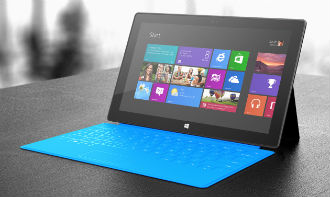 Over the last week or so we witnessed a flurry of Windows RT news, some positive, some very negative indeed. Late last week Microsoft decided to slash the prices of the Surface RT by as much as $150 in an effort to make the uncompetitive tablet a bit more appealing to the average consumer on the prowl for a cheap media tablet.
Over the last week or so we witnessed a flurry of Windows RT news, some positive, some very negative indeed. Late last week Microsoft decided to slash the prices of the Surface RT by as much as $150 in an effort to make the uncompetitive tablet a bit more appealing to the average consumer on the prowl for a cheap media tablet.
In June, Microsoft announced that it would release Outlook 2013 for Windows RT tablets, which is clearly an attempt to gain a bit more traction in the enterprise segment. The decision not to include Outlook in Windows RT at launch was baffling, and still is. The first reviews of Outlook 2013 for RT are in and they are positive, but it really should have been included months ago. With the upcoming 8.1 update, it should land on all RT devices, provided there are still RT devices by the time it appears.
This is no laughing matter, the lack of actual Windows RT products is becoming a serious concern. For example, Lenovo has just dropped the Yoga 11 convertible from its web shop. Dell and Asus have also slashed the prices of their RT tablets. Some players like HP ignored Windows RT altogether, while some gave it a go and dropped it, like Samsung. What’s more, all vendors are focusing on proper Windows 8 tablets instead, based on x86 chips.
In fact, the only hardware maker that still seems to be taking Windows RT seriously is Microsoft itself. The Surface RT price cut is a way of clearing inventory and making room for the next generation Surface RT, or a couple of them. At this point it seems that Microsoft is working on two different designs. One is reportedly based on the Qualcomm Snapdragon 800 SoC, while the other one will be powered by Nvidia’s Tegra 4. Rumours of a smaller Surface RT have been floating around for months and there is a good chance Microsoft will roll out a 7- to 8-inch design along with a new full-size 10.6-incher.
Unfortunately it seems to be too late. Future Windows RT tablets, including the Surface RT in both rumoured flavours, will now have to compete with tablets based on Intel’s new Bay Trail chips. This was not the case last year, when the Surface RT was opposed solely by ARM based Androids and iPads. Now it will face tough in-house competition in the form of Windows 8.1 tablets powered by Intel’s x86 Atoms. What’s more, Bay Trail is shaping up to be a beast. It is said to be faster than the Snapdragon 800 and it doesn’t need much power, either.
With new x86 SoCs from Intel and AMD coming online, it is hard to see why Microsoft would want to stick with a specialized tablet OS, designed for ARM. The next generation of Windows 8.x tablets is expected to end up a lot cheaper than the first generation, leaving very little wiggle room for Windows RT. Small wonder then that many brands aren’t getting on board, since they seem to believe Windows RT will be dead as disco within a generation or two.
It seems that the only practical way to keep Windows RT alive in the long run is to stick it on dirt cheap tablets designed to take on bargain Androids in the 7- to 8-inch range. This probably won’t work, as Windows RT is rather bloated and it’s far too expensive to make sense on such cheap devices, unless Microsoft agrees to practically give it away for free. Since we are talking about Microsoft, this will happen when hell freezes over. In theory at least, Microsoft could keep Windows RT alive, but we’re really not sure it should.





